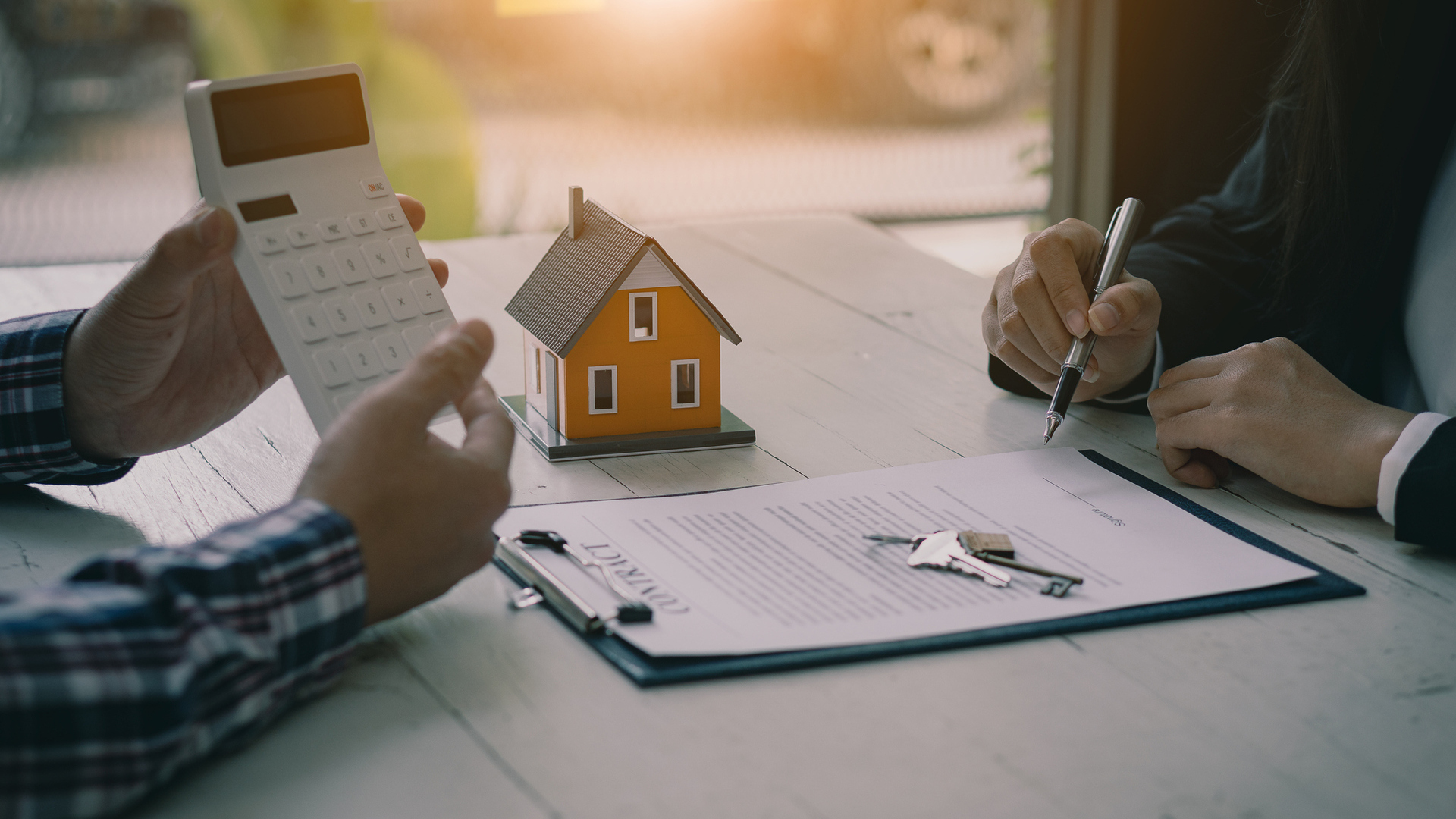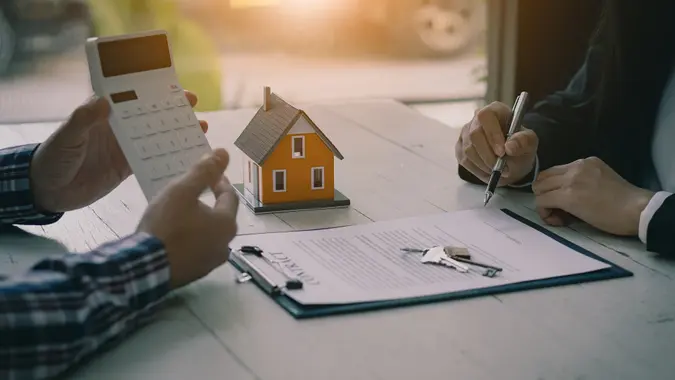

ArLawKa AungTun / Getty Images/iStockphoto
Anyone who’s bought a home, or even thought about it, in the past fifteen years probably remembers the devastating effects of the housing bubble crash and subsequent foreclosure crisis that predicated 2009’s Great Recession.
“People who couldn’t pay their mortgages lost more than 6 million houses, adding extra inventory to a market when unemployment negatively impacted demand,” said Bruce Mohr, senior investment advisor, and credit consultant at Fair Credit.
Find Out: 10 Best New Items Coming to Dollar Tree in 2023
Read: 3 Things You Must Do When Your Savings Reach $50,000
Related: 2023’s Housing Correction Could Be the Largest Since Post-WWII
With the housing market running hot even through the pandemic, many people have become concerned that we’re in another housing bubble, and fear that another crash could follow. We spoke to real estate and finance experts who explain why we are not, in fact, in a housing bubble.
Mortgage Lending Requirements Are Substantially Stricter
One of the factors that led to the last bubble and then crash, Mohr explained, was mortgage lenders making a lot of sketchy loans to people who really shouldn’t have received them. He said, “It is safe to conclude that mortgage lenders have learned from the 2008 financial crisis because they are no longer making impulsive loan decisions. Getting pre-qualified for a mortgage or getting accepted after you’ve selected a home is harder.”
Alex Byder, owner of BD Home Holdings, LLC, explained further, “Adjustable-rate loans are one of the most common ways to enter a housing bubble. When rates of these mortgages inevitably increase, people are forced to pay a much higher mortgage than they anticipated. However, only 0.1% of mortgages right now are adjustable (compared to over 50% in 2008).
He said that lenders make considerable efforts to ensure buyers are eligible for a mortgage, looking into your earnings, occupation, and bank account in addition to other requirements. “The typical home buyer in today’s market has a credit score of at least 720 and a debt-to-income ratio of more than 36%. That is a good indication that the current situation differs from the housing bubble that led to the Great Recession.”
Take Our Poll: What’s the First Thing You Would Do If You Won a Big Lottery Jackpot?
Strong Job Market and Low Foreclosures
Foreclosure rates are still low, as well, Byder pointed out, “which is a sign that people can still afford their mortgages and are continuing to pay them. Additionally, the job market is still strong which means that most people are employed and have money coming in to pay their mortgages.”
Low Speculation and Borrowing
There are a number of factors that provide sound evidence that the current housing market is not in a bubble, according to Don Wede, of Heartland Funding Inc. Namely, strong economic fundamentals. “A housing bubble typically forms when there is a rapid, unsustainable increase in home prices fueled by speculation and unsustainable levels of borrowing,” Wede said. “This is not the case today, as the economy is strong and unemployment is low.”
Limited Housing Supply
Though higher home prices do look like a bubble, Martin Orefice, CEO of Rent To Own Labs, explains that this has a cause that is not a bubble. “Housing prices are stubbornly high even as the real estate market has ground to a halt with high inflation and high interest rates, but these prices really do reflect the availability of housing on the open market. There simply isn’t enough inventory for everyone who wants a home to afford one, and this is the dynamic that’s driving high prices.”
He explained that in a bubble, homes are priced well above their actual market value, and when that value snaps back to what the market can support, a crash ensues. In this case, he explained, “When and if we break out of this inflationary cycle and interest rates go down, it’s much more likely that housing prices will head up, not down, at least until new construction can catch up with demand at some point.”
Cash Purchase Rates Are High
When people can afford to buy homes with cash, this is usually a sign of a healthy market. The rate of cash buyers is at its highest in years at 30%, so we are not dealing with the troubles we had in the great recession, according to Jeff Cody, a real estate investor and managing director of NextBridge Home Solutions LLC.
“Cash buyers in 2006 were only 21% of the market then and many borrowers were not qualified at all for their loans. They were chasing a frenzied market, sometimes with over 100% leverage, so when the bottom dropped the real estate bubble popped and there was a flood of inventory that couldn’t be sold.”
Federal Interest Rates Have Risen
Recent moves by the Fed to try and combat inflation “has driven many would-be homebuyers to put their plans on pause as they wait and see what will happen with rates,” said Klaus Gonche, real estate advisor and principal of The KG Group with Compass in South Florida. “This sudden drawback on demand has brought tons of uncertainty into the marketplace causing many to worry about a bubble. I believe this is largely an effect of fears about what happened during the 08-09′ housing crash.”
Improved lending standards and a healthier debt environment make it less likely for a housing crash, however, he said.
Market Conditions Are Vastly Different
We are not headed for a bubble, according to Mike Hardy, Managing Partner at Churchill Mortgage, because, “Under the surface, this market is very different than it was in 2007-08. It would require an unexpected flood of supply, or a rapid decline in buyer demand to create a crash. For the market to crash – drop 25-30% – we would need some unforeseen seismic event. We just endured a pandemic and now have a war that is creating supply chain challenges, but the market remains intact. The bottom line is there are significantly more buyers than sellers, even with the affordability issues.”
Additionally, he pointed out that a wave of millennial buyers are coming into the market that will need housing. “No market is unstoppable, but this market has solid fundamentals and momentum.”
Expect Corrections
All of that said, what we will likely see in the coming months will be a small correction in pricing as sellers adjust to the lower level of demand currently, Gonche said. “We will likely see this stalemate type of market until the rate increases begin to slow or reverse (which seems to be starting to happen). Once rates have stabilized and the sidelined would-be buyers regain their confidence, we will likely see another wave of buyers flood the market and tilt the supply/demand equation in favor of sellers again.”
More From GOBankingRates
Source link
